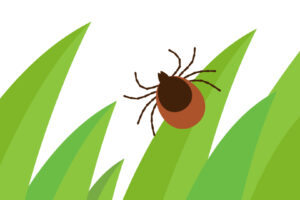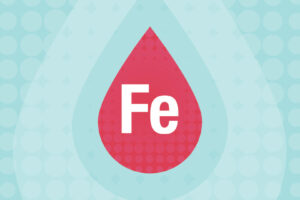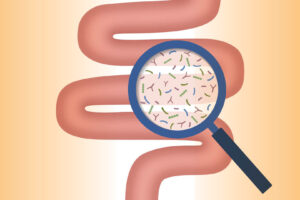The Internet shows like “13 Reasons Why” and celebrity deaths like Anthony Bourdain and Kate Spade have pushed the topic of suicide to the forefront for many Americans, but especially for teens.
Death by suicide is on the rise and this appears to be closely correlated to the increase in depression in youths and young adults, based on the latest research from the Centers for Disease Control and Prevention (CDC). In fact, suicide was the second leading cause of death in young people aged 15 to 34, and the third leading cause of death in youths aged 10 to 14. This makes it one of the most prevalent health issues facing young people today.
Untreated depression is a significant risk factor for suicidal behavior and suicide attempts. Do you know the warning signs?
The Impact of the Media and Technology
When high-profile suicides occur close together, like in the case of Bourdain and Spade, teens become more aware of the trend. Coupled with the Netflix series “13 Reasons Why,” which follows the story of high school student Hannah Baker’s suicide, teens may develop the impression that suicide is an acceptable solution.
Twenty to 25 percent of youth will experience a mental health disorder in their lifetime, with most mental health disorders beginning in childhood or adolescence, according to the National Co-Morbidity Survey: Adolescent Supplement.
The “virtual world” can give us a false sense of connectedness through apps like texting, Facebook, Snapchat, and Instagram. Excessive amounts of screen time and use of social media doesn’t provide children with the opportunity to form and develop live, in-person relationships. Social media provides a false lens through which to filter reality from our lives.
As an extreme example, a seemingly innocuous social gaff can be shared and amplified on social media instantly, resulting initially in embarrassment and potentially to social isolation and feelings of loneliness and hopelessness. These feelings could develop into a larger depressive episode with more serious implications.
Despite having some of the stiffest anti-bullying laws in the country, New Jersey teens still can feel bullied. As recently as the summer 2017, a 12-year-old Rockaway Township middle school student took her life after being harassed at school and online through texting, Snapchat, and Instagram.
Recognizing the Signs of Depression
One in four adolescents will experience mental disorders that are severe enough to cause significant functional impairment. Recognizing the signs of depression is critically important to ensure that your child gets the services and support that he or she needs.
The potential signs of depression and anxiety, include:
- Changes in energy level
- Changes in appetite
- Changes in concentration, which could result in a decline in academic performance
- Avoiding school and social events that is distinctively out of character to previous behavior
- Negative thoughts about themselves, the world around them, and the future
- Loss of interest in activities which he or she previously enjoyed
- Suicidal thinking and non-suicidal self-injurious behaviors, such as cutting
- Substance use and experimentation
- Increased irritability
- Change in sleep patterns
- Physical complaints with no clear medical cause or etiology
If you notice any of these signs, be careful not to attribute it to “teens being teens.” As a parent, caregiver, or well-wisher, it’s important to identify when there is a change from baseline emotional and behavioral functioning. Ask your child what’s bothering her. Try to be proactive and preventive by opening the lines of communication and keeping them open. Remember, you are the parent, not your child’s friend. It’s important to communicate and be aware of your child’s on-screen and off-screen life. There’s a fine line between being a “helicopter parent,” who intrusively hovers over their children, and being an accessible, interactive parent who provides space but is knowledgeable about what’s going on in your child’s life.
Your child may be hesitant to talk at first and just provide one-word answers. That’s OK. It’s not about the words that are exchanged; some of best interactions will be through shared experiences while working on something together or trying to complete a task together. Once you’ve established a level of comfort and trust, your child will talk when they are ready. They may even choose to talk to another trusted family member. Be open and supportive about whoever she chooses to confide in.
Should We Go to the ER?
Once you understand more about the issues your child is facing, seek support services, whether it’s through your primary care physician, religious group, friends, family, community services or school resources.
If he or she is threatening self-harm or harm to someone else, a visit to the local emergency department is necessary. Hospitals are staffed with skilled mental health professionals who can help ensure your child stays safe. A recent study in the journal Pediatrics found that the numbers of kids being admitted or seeking help in the emergency department or hospital for suicidal ideation or attempts have almost tripled from 2008 to 2015. The rate of increase was highest among adolescent girls.
Be mindful of the potential risk factors and protective factors associated with suicidal ideation and behavior:
- A past history of suicide attempts
- A history of non-suicidal self-injurious behaviors
- Substance use
- Recent interpersonal conflicts
Protective factors, or qualities that can help a child cope with depression, include having a supportive family and social network and having a strong sense of religious or cultural identity. Once the child gets the support she needs, discuss a “safety plan” and the coping mechanisms that will be implemented if she becomes depressed again.
Suicide is preventable by knowing the signs and being observant. Be mindful and attentive to any emotional changes that you may notice, and take steps to get your child help and support.
 Ankur Desai, MD, is a board-certified adolescent psychiatrist on staff at CentraState Medical Center and can be reached by calling 866-CENTRA7.
Ankur Desai, MD, is a board-certified adolescent psychiatrist on staff at CentraState Medical Center and can be reached by calling 866-CENTRA7.





